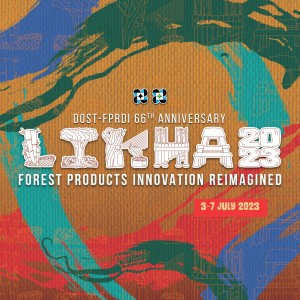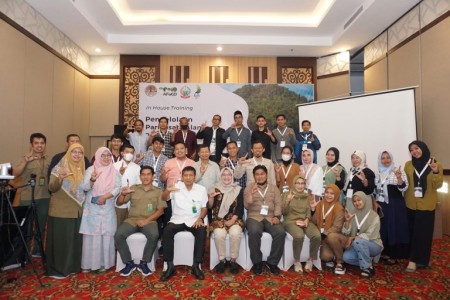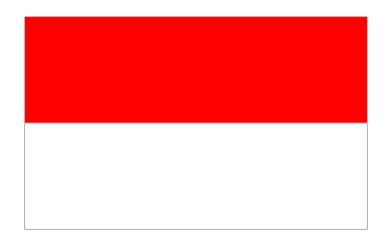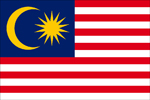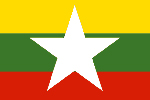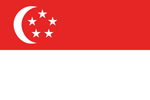Species and Distribution of rattan in Indonesia Indonesia | 29/08/2025
Species and Distribution of Rattan in Indonesia
Jasni and Krisdianto
Forestry Engineering and Forest Product Processing Research Center (FEFPProc) ,Bogor, Indonesia
Rattan as a member of the palm family has been utilized by man since time immemorial. Even in this modern world rattan wares are still being demanded industrialized countries. Many believes that the phenomenon is a reflection of modern man’s desire to go back to nature. Rattan is one of the Non Timber Forest Products (NTFPs). It is considered as an important forest product in terms of domestic and international trade. Approximately 60 to 80% of the world rattan demand comes from Indonesia. Over the last five years, Indonesia has produced about 120,000 tons of rattan material with the total export volume of approximately 80,000 tons annually, and domestic consume of about 35% of the total rattan production.
Seven out of sixteen genus of existing rattan in the world have been growing in Indonesia; these are Calamus, Daemonorops, Khortalsia, Ceratolobus, Plectocomopsis, Cornera and Miryalepis. In addition, 306 out of 516 rattan species growing in tropical rain forest exist in Indonesia. Furthermore, 53 species have been processed and used for various purposes. These are, among others: Calamus caesius, locally called “Rotan sega”; Calamus manan, or “Rotan manau”; Daemonorops sabut or “Rotan taman”; Calamus trachycoleus or “Rotan irit”; Calamus inops or “Rota tohiti”; and Calamus symphysipus or “Rotan ombol”.
In Indonesia rattan has naturally been grown almost in all major islands such as Sumatra, Java, Kalimantan, Sulawesi, Maluku, Nusa Tenggara, and Papua. Some major provinces such as Aceh, all provinces in Kalimantan, South-Sulawesi, Central-Sulawesi and Southeast Sulawesi as well as Papua are leading as rattan producers. For more than one century, rattan regeneration has been developed in a small scale in several provinces, i.e. West Sumatera, Central and East Kalimantan. The regeneration mostly are carried out by local people.
The Government pays attention to draw a policy on export restriction of raw rattan material as well as on semi-finished rattan products since 1986. This imposition is aimed for promoting the rattan domestics industries, opening the employment opportunity, getting added value, and the willingness to ensure the sustainable management of rattan resources. This policy influenced to rattan industrial developments, especially on the raw rattan material price at national level as well local/community level. The rattan price decreased for almost two decades.
Rattan products become popular because of its beauty, freshness and endurance. At present, although the products are still in great demand the activities of weaving and utilizing rattan canes have almost completely disappeared from the communities. The main problem is the lack of raw materials. People used to harvest rattan cane in the forest near by their houses but now they have to spend a few day or longer to find rattan in the far inside forest. Promotion on development of rattan plantation is therefore needed to help conserving the rattan species and farmers in the region of rain forests.
1. Rattan Manau (Calamus manan Miquel)
Manau rattan is a common and well known trade commodity, mostly located in Sumatra and Kalimantan/Borneo. The stem has a yellow color, with 30 – 80 mm diameter without sheaths, 18 – 35 cm internodes length, and 1,1- 3,7 mm nodes high. Manau is a high quality rattan, an excellent framework materials for furniture both in natural form (without polish) and polished.
2. Rattan Batang (Calamus zollingeri Becc.)
This Rattan known in the trade as rattan batang, batang putih, umul (Sulawesi), rotan air, alawaku malibat (Maluku). This species is spread in Sulawesi and Maluku. The stem colour is light grey and yellowish with 20 – 40 mm stem diameter without sheaths, 35 -50 cm internodes length and 2 – 2,7 mm nodes high. The trunk of this rattan is a good material for furniture in its a spherical shape.


Figure 1. Rattan Manau (Foto:Jasni) Figure 2. Rattan Batang (Foto:Jasni)
3. Rattan Manau tikus (Calamus tumidus Furtado)
In the trade, this rattan is known as rattan manau tikus, manau tikus (Sumatera), or janan (Kalimantan/ Borneo). This species distributed in Sumatera and Kalimantan/ Borneo. The stem is white colored , with 12 – 25 mm diameter stem without sheaths, to 20 – 30 cm internodes length, and 1,0 – 1,8 mm nodes high. This rattan is a good material for furniture
4. Rattan Semambu (Calamus scipionum Loureiro)
Trade/ commercial name: rattan semambu or rip-rip; distribution: Jawa/Java, Sumatera and Kalimantan/Borneo; Stem color: brown to dark brown-black; internodes length 30 - 80 cm; stem diameter without sheaths: 23-35 mm; and nodes high 0,67-3,16 mm. Polished rattan stem are used for medium quality furniture. Rattan Semambu has long internodes, make the stem is suitable for stick, umbrella shaft and handle oil filter/ medium quality furniture


Figure 3. Rattan Manau Tikus (Foto:Jasni) Figure 4. Rattan Semambu (Foto:Jasni)
5. Rattan balubuk (Calamus burckianus Becc.)
Trade/ commercial name; rattan balubukin, howe balubuk (Sunda), rotan sepet, penjalin baku (Jawa); distribution: Jawa Barat/west java, Jawa Tengah/center java and Jawa Timur/ east java; stem color is white brown: stem diameter without sheaths: 20 – 28 mm; internodes length 20 -22 cm and nodes high 2 – 2,6 mm. Polished cane stalks are used for furniture.
6. Rattan seuti ( Calamus ornatus Blume)
Trading name: rattan suti; local name: howe seuti/ rotan
kesur (jawa barat/West Java), rotan kesup (Bengkulu), and minong
(Kalimantan/Borneo); distribution: Sumatera, Kalimantan/Borneo and
Jawa/Java; Stem color: cream, internodes length: 20 -30 cm, stem
diameter without sheaths: 25 – 40 mm; nodes high: 1,9 – 2,9 mm. Rattan
rods are generally used in polished form for furniture, however, natural
form can be used for broom and machetes handle.


Figure 5. Ratttan Balubuk (Foto:Jasni) Figure 6. Rattan Seuti (Foto:Jasni)
Download the attachment for:Table of The List of Commercial species and distribution of rattan in Indonesia and List of Rattan species in Indonesia.pdf
Source: Jasni , R. Damayanti , and T. Kalima. 2007. Atlas Rotan Indonesia Jilid I .
Puslitbang Hasil Hutan . Bogor
| NO | FILE NAME | DOWNLOAD |
|---|---|---|
| 1 | List_of_Species_and_Distribution_of_Rattan_in_Indonesia1.pdf | Download |


